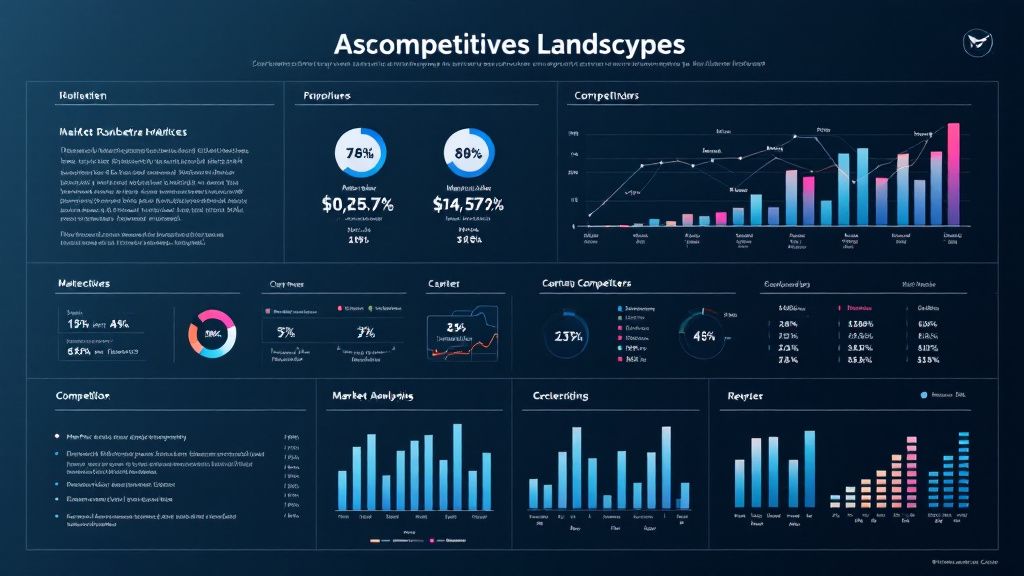In the fast-paced world of business, strategic planning is your key to unlocking success. By focusing on business growth strategies, you can map out a clear path to enhance your organization’s performance. This journey involves understanding and implementing effective business strategy development, allowing you to align your objectives with actionable plans. Recognizing the significance of key performance indicators can propel your efforts in assessing progress and fine-tuning strategies accordingly. Performance management then plays a crucial role, ensuring that each aspect of your operations is optimized for success. With a strategic plan in place, you position yourself to navigate challenges and achieve sustainable growth.

The Foundation of Business Strategy
Looking at business strategy development through the lens of foundational principles, you can see how it serves as the bedrock for achieving sustained success. This foundation involves a comprehensive understanding of your market environment, identifying strengths, weaknesses, and opportunities that shape your strategic decisions. Equipped with this knowledge, you are better positioned to formulate approaches that foster business growth and resilience.
In embarking on this strategic journey, establishing clear key performance indicators becomes essential. These indicators not only guide your progress but also help in tracking and measuring the effectiveness of your strategies. By doing so, you ensure that your business remains aligned with its overarching goals, creating a pathway for continuous improvement and informed decision-making.
Performance management is crucial in this context, as it involves fine-tuning systems and processes to maximize output. By honing in on performance metrics, you can identify and mitigate any inefficiencies, paving the way for enhanced productivity and competitive advantage. This ongoing process ensures that your strategies remain relevant and impactful in a dynamic business landscape.
Ultimately, the foundation of a robust business strategy lies in the ability to adapt and evolve. Staying attuned to industry trends and shifts allows you to adjust your plans, ensuring your organization not only survives but thrives in the face of change. A well-built foundation empowers you to seize opportunities and overcome challenges with confidence.

Analyzing Market Trends for Strategic Advantage
To gain a strategic advantage, you need to adeptly analyze market trends that influence your industry. This involves staying attuned to shifts in consumer behavior, technological advancements, and competitive movements. By understanding these factors, you can anticipate changes that may impact your business and strategically position yourself to capitalize on emerging opportunities. Keeping your finger on the pulse of the market enables you to make proactive, informed decisions.
Embracing business growth strategies requires that you not only understand current trends but also envisage future shifts. Did you know? A study by McKinsey & Company reveals that businesses that actively monitor and respond to market trends are 2.4 times more likely to outperform their competitors. This kind of market responsiveness is integral to developing strategies that propel your business forward and secure long-term success.
Monitoring key performance indicators during this analysis is vital. These indicators provide measurable insights into how well your business is adapting to market changes. By meticulously tracking them, you can adjust your strategies in real-time to optimize performance management, ensuring that your business remains agile and resilient in a fluctuating market.
The process of analyzing market trends and leveraging them strategically is an ongoing one. It demands an adaptive business strategy development approach, where flexibility and insight guide your actions. This dynamic approach allows you to continuously refine your strategies, ensuring they align with evolving market conditions and keep your business ahead of the curve.

Assessing Competitive Landscapes
To effectively assess competitive landscapes, you must thoroughly examine the strengths, weaknesses, and strategies of your rivals. Gaining this insight requires understanding your competitors’ market positions and growth strategies. One of the challenges in analyzing competitive landscapes is the dynamic nature of markets, where shifts can rapidly alter the competitive balance. This issue can be addressed through continuous monitoring and analysis, making strategic adaptations to maintain or enhance your market position.
Utilizing performance management tools helps you evaluate both your performance and that of your competitors. By integrating key performance indicators into this analysis, you can fine-tune your strategy to better leverage your strengths and address any gaps. Developing a robust business strategy entails not only reacting to competitors but also anticipating their next moves. This proactive approach empowers you to seize competitive advantages and drive sustainable business growth.

Crafting a Performance-Driven Business Model
In crafting a performance-driven business model, your focus should be on creating a structure that enables efficiency and growth. This involves aligning your business strategy development with the operational processes that drive value. By establishing a clear framework for performance management, you ensure that resources are optimally allocated to meet strategic objectives, thereby enhancing overall productivity and competitiveness.
Comparing traditional business models with performance-driven approaches reveals key differences. While traditional models often prioritize stability, performance-driven models emphasize agility and responsiveness to changing market dynamics. This flexibility allows you to swiftly adapt to new opportunities and challenges, fostering business growth strategies that leverage innovation and efficiency to maintain a competitive edge.
Incorporating key performance indicators is pivotal to your model’s success. These metrics provide a measurable foundation to assess the effectiveness of your strategies and operations. By continuously evaluating your progress against these benchmarks, you can make informed adjustments that keep your business model relevant and effective. This approach supports a cycle of continuous improvement, crucial for sustained success in today’s volatile business environment.

Implementing Efficient Resource Allocation
Implementing efficient resource allocation is crucial for optimizing business performance. It involves the strategic distribution of resources—be it financial, human, or technological—to align with your business objectives. By focusing on what is truly important, you ensure that every resource contributes to maximizing productivity and achieving your goals, which is essential for sustainable business growth strategies.
One of the most frequently asked questions about resource allocation is how to determine the right resources to prioritize. Here’s the answer: Analyze your key performance indicators to identify areas with the highest impact potential. By understanding which segments drive the most value, you can make informed decisions on where to direct your resources effectively, ensuring optimal use and improved performance management.
To successfully implement efficient resource allocation, continuous evaluation and realignment of resources are necessary. As market conditions and business needs evolve, revisit your business strategy development to ensure resources are aligned with your current priorities. This dynamic approach helps maintain focus on critical areas, allowing for swift adjustments that empower your business to adapt and thrive in a competitive landscape.

Leveraging Technology for Business Optimization
Leveraging technology effectively can significantly optimize your business processes. By integrating advanced tools and solutions, you streamline operations and enhance productivity, which are critical for fostering efficient business growth strategies. Embracing technology allows you to innovate and respond dynamically to changing market demands, maintaining a competitive edge in your industry.
To truly understand the role of technology in business optimization, you need to shift your mindset from viewing it as a mere operational tool to seeing it as a strategic asset. This new perspective encourages you to invest in and implement technologies that align with your business strategy development. By doing so, you drive innovation, efficiency, and growth across your organization.
Utilizing technology can also improve performance management by providing real-time data and insights. With accurate key performance indicators at your fingertips, you make informed decisions that optimize processes and drive higher performance levels. This approach empowers you to identify trends, monitor progress, and strategically adjust tactics to meet your organizational goals effectively.
Adopting a technology-driven approach involves continuous evaluation of emerging tech trends and adapting them to your specific needs. This ongoing commitment not only enhances operational efficiency but also positions your business to harness the full potential of technological advancements, securing a robust future of success and innovation.








